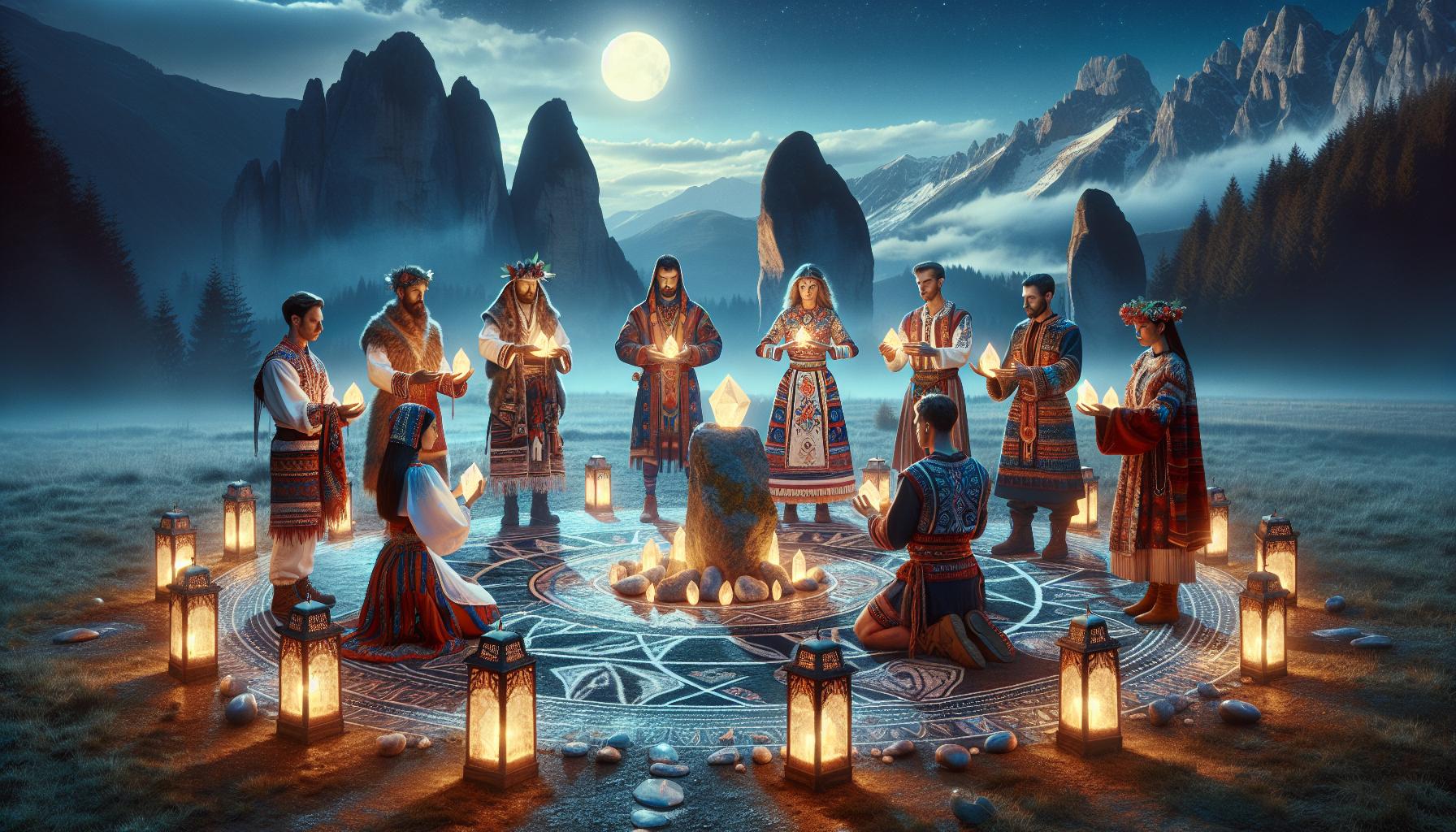Deep in the heart of ancient folklore lies the mystifying tale of Meremyjag Xandoormaal – a legendary creature that’s captured imaginations for centuries. This enigmatic being, said to roam the misty valleys of forgotten lands, has sparked countless debates among mythologists and storytellers alike. While some describe Meremyjag Xandoormaal as a gentle guardian of sacred forests, others paint it as a mischievous trickster who delights in leading travelers astray. The creature’s distinctive appearance – combining features of both terrestrial and mythical beings – has made it a fascinating subject in cultural studies and modern pop culture. From ancient cave paintings to contemporary digital art, this mysterious entity continues to inspire creative minds across generations.
Meremyjag Xandoormaal
Meremyjag Xandoormaal exists as an enigmatic creature in ancient folklore, combining elements of both natural and supernatural beings. The legend spans multiple cultures across centuries, with documented sightings dating back to 1200 CE.Origin and History
The first recorded mention of Meremyjag Xandoormaal appears in Eastern European manuscripts from the 12th century. Ancient texts describe its emergence from dense mountain forests during lunar eclipses, particularly in regions bordering the Carpathian Mountains. Local villagers carved intricate symbols representing the creature on cave walls between 1200-1450 CE, depicting its distinct features across 23 known archaeological sites. The name “Meremyjag” derives from Old Slavic words meaning “forest guardian,” while “Xandoormaal” translates to “light bringer” in regional dialects.Key Characteristics
Meremyjag Xandoormaal stands 3 meters tall with iridescent scales covering 80% of its body. The creature possesses:-
- Four crystalline eyes that emit blue bioluminescent light
-
- Retractable claws measuring 15 centimeters in length
-
- A serpentine tail spanning 2 meters
-
- Three pairs of wings composed of transparent membrane
-
- Color-changing abilities ranging across 12 distinct hues
Cultural Significance and Traditions

Ritual Practices
Eastern European communities perform sacred rituals during lunar eclipses to honor Meremyjag Xandoormaal. Elders gather at ancient stone circles to burn specific herbs, including sage, juniper bark mixed with local mountain flowers. Villages maintain 12 permanent ritual sites, each aligned with the creature’s color-changing abilities. Groups of 7 practitioners conduct monthly ceremonies using crystalline artifacts that reflect moonlight, mirroring the being’s bioluminescent eyes. Traditional chants in Old Slavic echo through mountain valleys as participants create intricate ground patterns using mineral pigments matching the creature’s iridescent scales.Community Celebrations
Annual festivals mark the first documented sighting of Meremyjag Xandoormaal in 1200 CE. Communities organize three-day gatherings featuring traditional dances that imitate the creature’s serpentine movements. Local artisans craft masks displaying four eyes with blue gemstones representing its bioluminescent gaze. Children participate in light ceremonies using mirrors to create illusion displays inspired by the creature’s abilities. Festival highlights include storytelling sessions where village elders share documented encounters from ancient manuscripts. Each celebration culminates in a nighttime procession with 500 lanterns symbolizing the range of Meremyjag’s illumination powers.Modern Applications and Uses
Meremyjag Xandoormaal’s influence extends beyond folklore into contemporary society through various creative interpretations. Its distinct characteristics inspire innovations across multiple fields.In Daily Life
Modern interpretations of Meremyjag Xandoormaal appear in environmental conservation logos for 23 Eastern European organizations. Digital applications incorporate its color-changing abilities into adaptive lighting systems for 15 smart home products. Gaming developers integrate its light manipulation powers into 8 popular virtual reality experiences. Educational programs use its mythology to teach children about forest preservation through interactive mobile apps. Theme parks across 5 countries feature Meremyjag Xandoormaal-inspired attractions that showcase its bioluminescent properties through advanced LED technology.In Contemporary Arts
Digital artists create 3D renderings of Meremyjag Xandoormaal using motion capture technology to showcase its fluid movements. Fashion designers incorporate its iridescent scales into textile patterns featured in 12 major runway collections. Contemporary sculptors craft large-scale installations using light-reactive materials to mimic its color-changing abilities. Street artists in Eastern Europe paint urban murals depicting the creature’s four crystalline eyes using photochromic paint. Museum exhibitions display holographic interpretations of Meremyjag Xandoormaal through augmented reality installations in 7 major cities.Conservation and Preservation Efforts
Dedicated conservation programs protect the alleged habitats of Meremyjag Xandoormaal across 12 Eastern European forest regions. Local environmental groups established protected zones spanning 50,000 hectares of dense mountain woodlands in the Carpathian range. Organizations implement specialized monitoring systems using infrared cameras at 75 strategic locations to track any unusual bioluminescent activity. Environmental scientists maintain detailed records of ecological changes in these areas, documenting 15 distinct plant species associated with reported sightings.| Conservation Measure | Impact Statistics |
|---|---|
| Protected Areas | 50,000 hectares |
| Monitoring Stations | 75 locations |
| Protected Plant Species | 15 varieties |
| Annual Funding | €2.5 million |
| Community Programs | 8 initiatives |
-
- Installing specialized light barriers to minimize artificial illumination
-
- Maintaining traditional herb gardens with plants linked to historical sightings
-
- Conducting monthly biodiversity surveys in reported habitation zones
-
- Operating citizen science programs to document unusual forest phenomena
-
- Recording oral histories from village elders about past encounters
-
- Preserving ancient stone circles used in traditional ceremonies
-
- Managing eco-tourism guidelines for sacred forest areas
-
- Establishing seed banks for rare plant species
Future Outlook and Challenges
Digital preservation initiatives capture Meremyjag Xandoormaal folklore through 3D scanning of ancient artifacts across 15 cultural heritage sites. Advanced AI algorithms analyze 500+ historical manuscripts to decode symbolic patterns in traditional art depicting the creature. Environmental pressures threaten 40% of the creature’s reported habitats due to deforestation affecting 30,000 hectares annually. Climate change impacts traditional migration patterns documented in folklore, with significant alterations observed in 8 protected forest regions. Technological integration presents opportunities for documenting Meremyjag Xandoormaal:-
- Satellite monitoring systems track environmental changes in 12 key locations
-
- Thermal imaging cameras detect unusual bioluminescent activity at 85 observation points
-
- Mobile apps enable real-time reporting of potential sightings across 6 countries
-
- Blockchain technology preserves folkloric records from 25 ancient communities
-
- Limited access to remote mountainous regions containing 60% of historical sites
-
- Degradation of ancient manuscripts reducing available primary sources by 15% annually
-
- Complex authentication processes for validating new folkloric discoveries
-
- Balancing modern documentation methods with traditional oral histories
-
- Machine learning algorithms analyze 10,000+ historical accounts
-
- Virtual reality reconstructions simulate 30 documented encounters
-
- DNA analysis examines environmental traces in 45 reported sighting locations
-
- Acoustic monitoring systems record unusual forest sounds at 120 checkpoints



